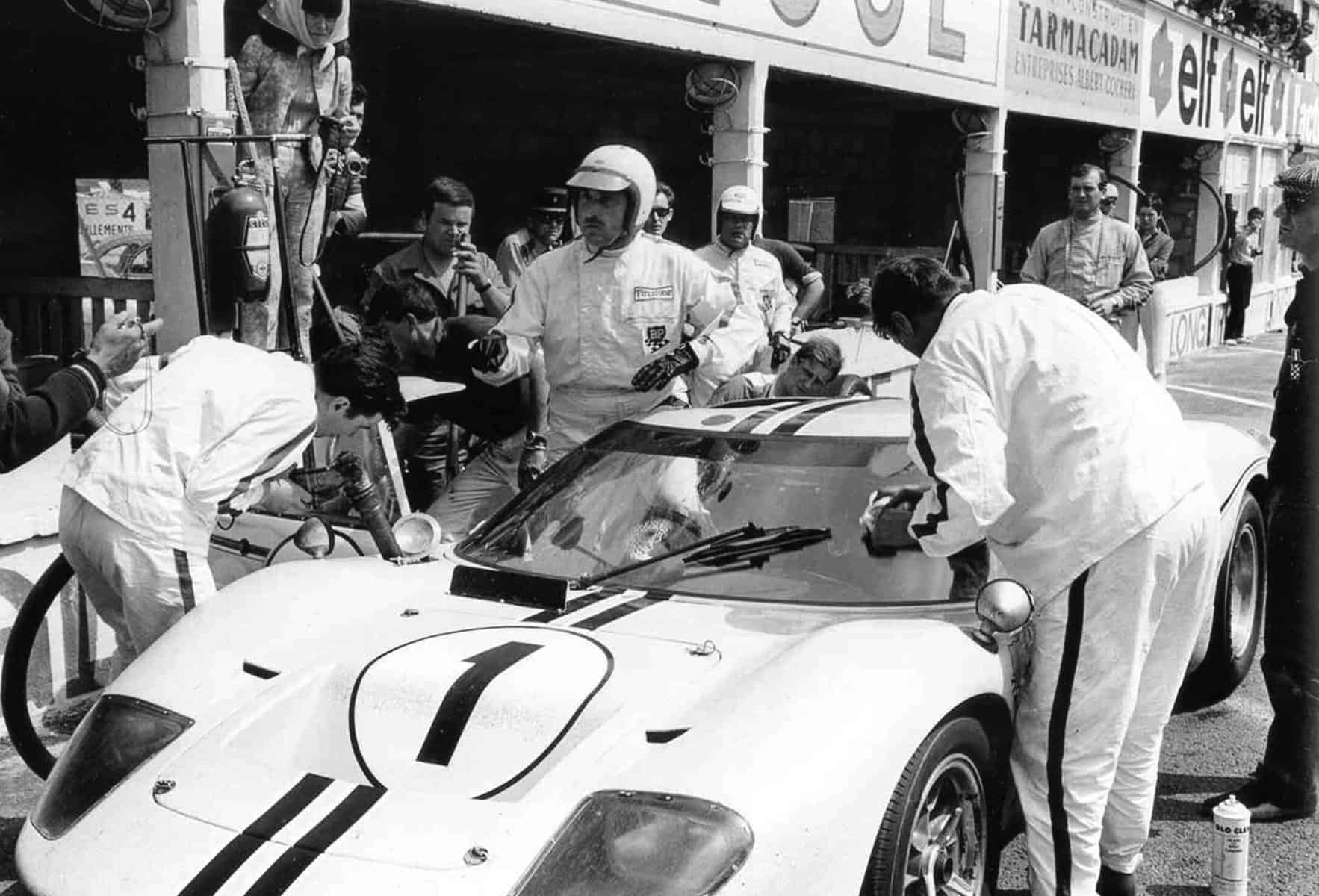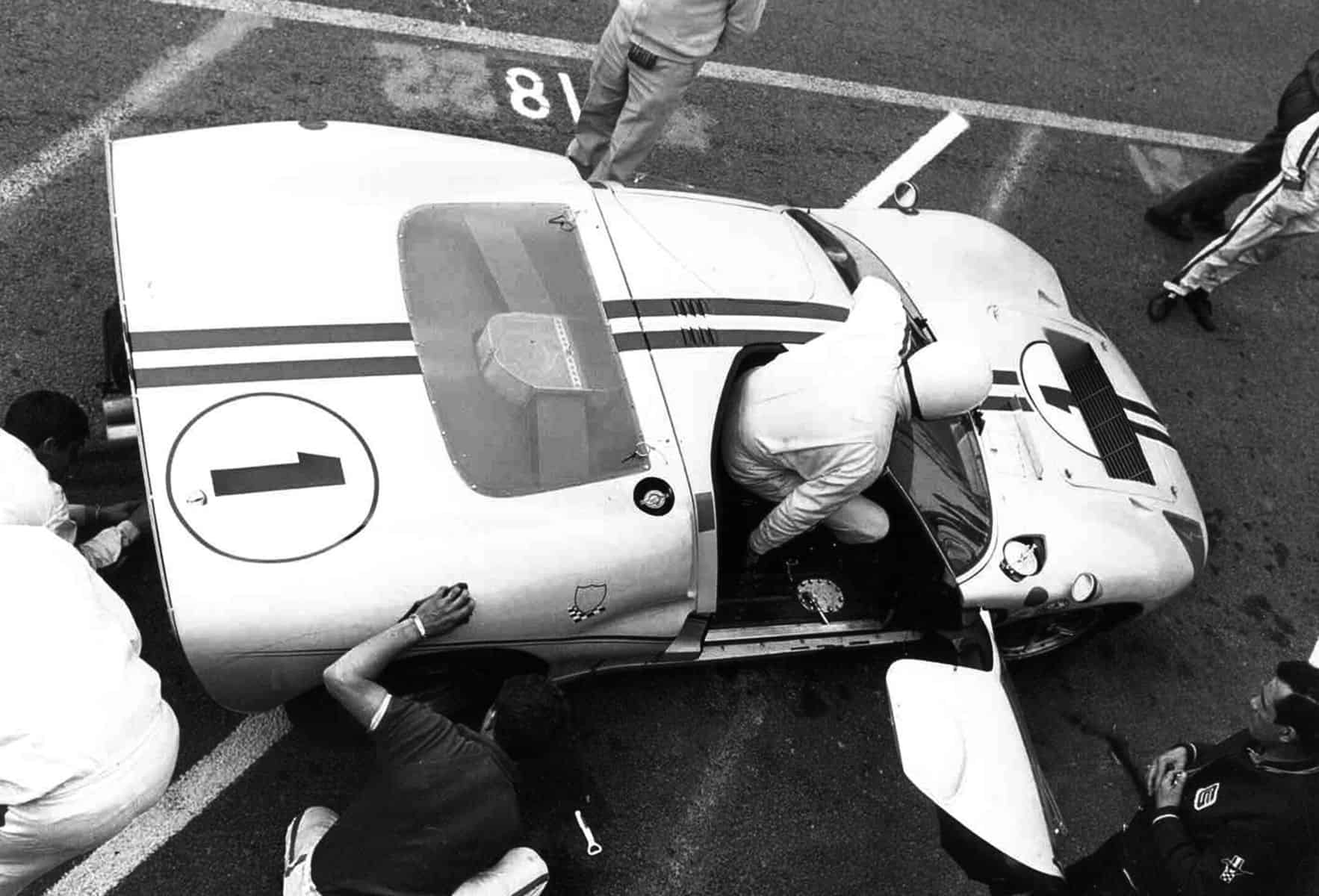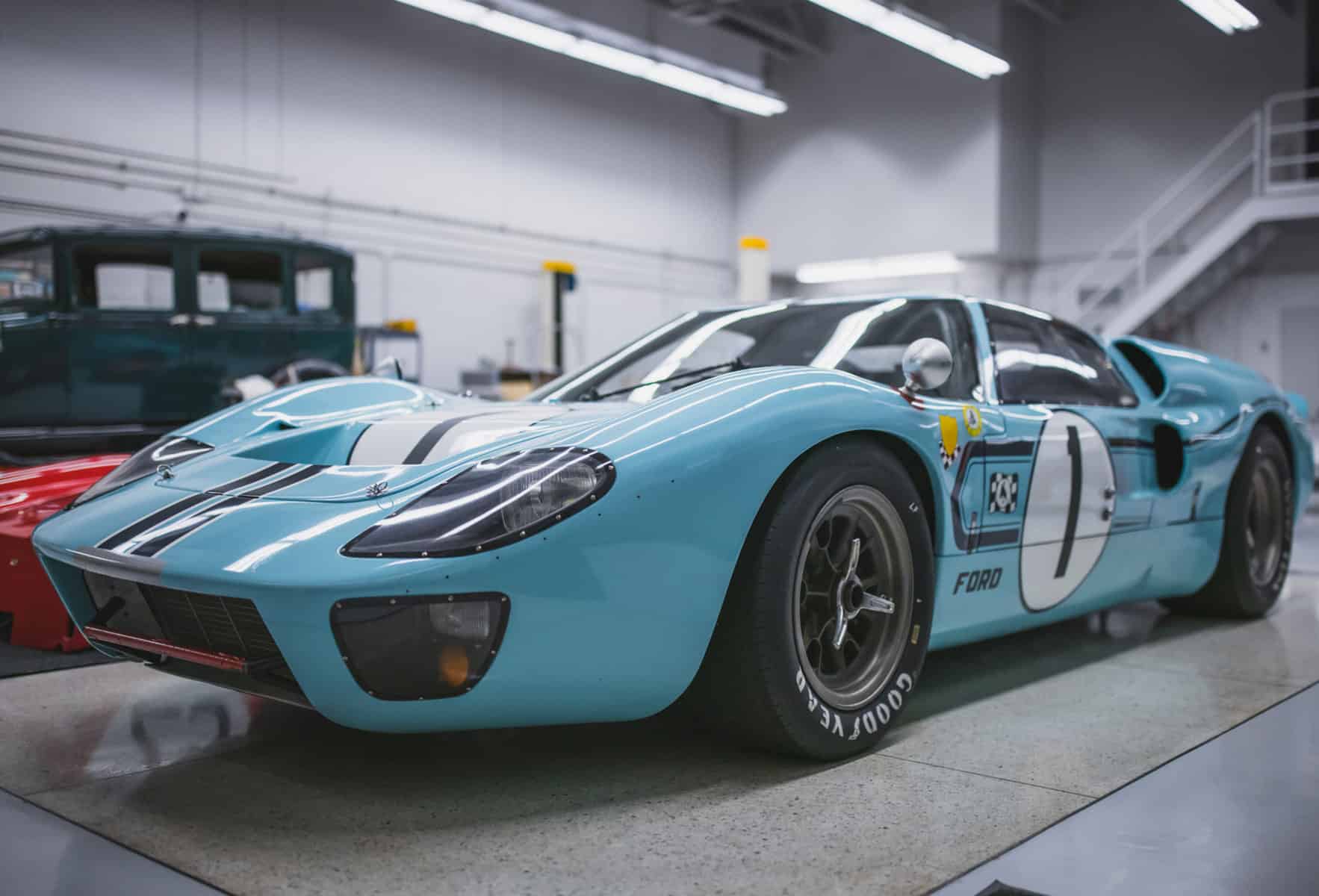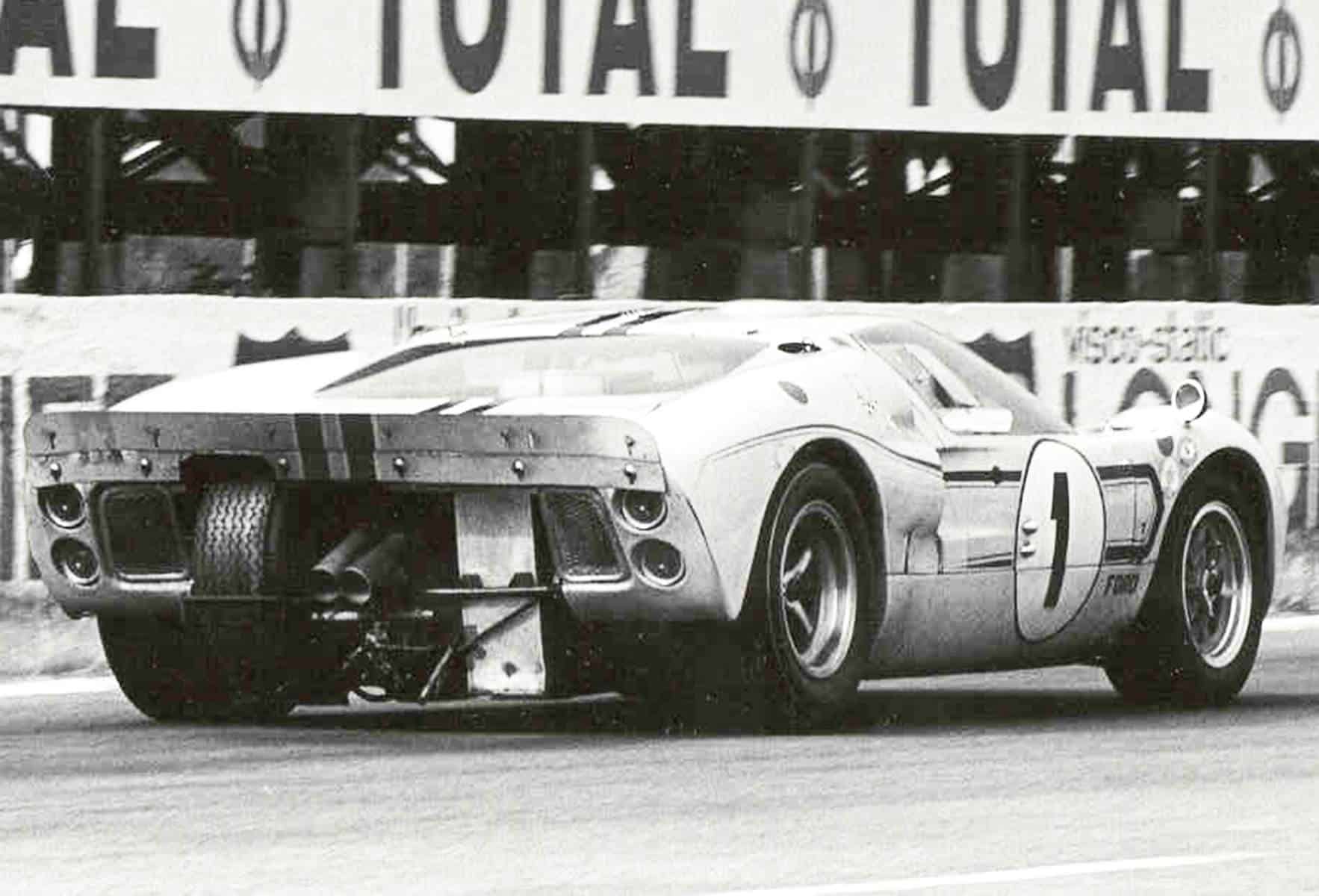Matter and Motion
The life cycle of collectible cars
BY: MILES C. COLLIER
PHOTOS: REVS INSTITUTE
One of my favorite historical competition cars is the Ford GT40. I was thrilled by them in the 1960s. In fact, I was at Dan Gurney’s famously ill-fated Sebring race where he had victory sewn up going into the last lap. The race official was poised with the checkered flag. All eyes were focused down the front straight waiting for the metallic blue Mk II Ford to appear. The car never appeared.
The Ford’s cam drive had failed just beyond coasting range to the finish. Other Fords flashed across the line, and then, out of the gloom, came Dan Gurney pushing his dead car into the lights. Through sheer determination, he heaved it over the line to shouts of encouragement. And that heroic effort served only to get him disqualified as, according to the rules, the car had to cross the line under its own power.

In my collection, I have that very Mk II, 1031, as well as a conventional Mk I example, the Thompson/Ickx “temporary” Gulf car from Daytona, 1967. If you’re my age, and perhaps even if you’re not, GT40s are among the most beautiful, historic, and just plain thrilling GT racing cars ever made. With a handful more than one hundred examples of varying models and configurations built, GT40s are comparatively common and eminently useful in historic races. Like their cousins, the Shelby Cobras, these cars have also been replicated with varying degrees of fidelity, from ludicrous to nut and bolt perfection. However, despite the car’s manifest qualities – reliable, easy to drive, easy to source parts, simple to maintain, comfortable and, yes, totally beautiful – we see fewer and fewer examples of this fabulous car at competitive events.
Where once we could find a class in which to run our car at almost any major historic race event, and, more significantly, there would always be a good handful of other GT40s to compete with, finding an appropriate venue today is becoming difficult. Either the eligibility parameters for the race are such that the Ford will run around in eighteenth place among much newer cars, or there is no race open to GT40s scheduled at all. Running in Can-Am grids, now a common phenomenon, has little appeal.

This growing lack of venues has started me thinking about the life cycle of collectible competition cars. They had one life that concluded their front-line careers when they became obsolete, no longer able to win, and therefore, functionally valueless. They began a new life when they were transformed into collectibles in the 1980s because it was their non-functional attributes that attracted collectors: historical importance, nostalgic romance, exceptional beauty, to say nothing of the driving experiences they afforded. We love old racers for reasons that have nothing to do with their original function: disposable race-winning tool.
As time passes, more and more modern racing tools transition to vintage collectible. More cars of increasingly modern vintage enter the historic racing net. Indeed, today’s fifty-five-year-old GT40s were being vintage raced when they were barely fifteen years old. This expansion pattern means that today’s grids often consist necessarily of unhappy mixes of relatively incompatible cars from an ever-widening span of years, or, as with the GT40, no race opportunity is offered at some meetings in order to accommodate newer cars. This increasingly wide mix of entries is entirely understandable given the tastes of both younger entrants and spectators who make up the vintage racing community.

And here is the point: collectible cars also have a life cycle; this reality is especially clear with historical racing cars. The problem is not only exacerbated by the crowding out caused by the ever-newer but obsolete, historical racing cars whose owners are looking for a venue in which to drive them, but the redefinition of many of these older cars themselves. We are all aware of the enormous monetary values being attached to some historic racing cars. Some of these machines, such as Ferrari GTOs, Alfa 8Cs, Porsche 917Ks comprise the most valuable cars in the world. As such, most if not practically all, have risen to the “too-valuable-to-race” category in their owners’ eyes.
Grids become more modern not just from the passage of time, but because older, too-valuable-to-race cars are being withdrawn from the scene. These cars become relegated to museum collections, concours, and perhaps the occasional tour provided it offers the level of security such valuable machines demand. Birds of a feather in the form of narrow, one make and model entry criteria have turned such cars into membership tickets to exclusive gatherings distinguished by the participant’s common ability to acquire such monetarily formidable entries. Consider Ferrari GTO, McLaren F1, Alfa 8C, Lamborghini Miura and other rarified gatherings. Ultimately, such cars will gradually progress to ever less functional use and ever more symbolic employment as art with all the attendant overtones of wealth, status, connoisseurship, and social signaling.
Automobiles have two natures: one is material. That is, they consist of matter. Historical cars consist of matter from the past. They are, in one form or another, relics that have endured through the years or decades to arrive here in our present. But cars are also phenomena. They operate and do things as a function of their power and mobility. We apprehend these aspects by seeing, feeling, hearing, experiencing, and even driving them.
All automobiles are a mixture of these two properties, matter and motion. Think of cars as points on the matter/motion continuum. A just-from-the-dealer, 2021 Ferrari inhabits some central area of the scale as a balanced presentation of stylish, impressive, and prestigious object and eye-watering performance. Historical automobiles, especially valuable ones, are found closer to the matter end of the scale. At the other extreme, “beater” Toyota Hilux pick-ups are almost all phenomena. Provided they work, no one cares about them as objects, as matter. As cars become ever more valuable and revered for their non-utilitarian, collectible functions, they drift inexorably to the matter end of the scale. Yes, we want to know they run, but it’s their matter that brings the dough. It is axiomatic that monetary value privileges matter. That’s why “originality,” “numbers matching,” and all that palaver is so emphasized in today’s collecting world. When these cars were first bought as collectibles for the vintage racing scene, thirty, fifty, or seventy years ago, they were a lot closer to our Toyota Hilux, valued less for their artifactual purity and more for the experiences they could confer, the pleasure to be derived from operating them on a track in contests with other vintage racers.
Where the object being collected also has operating characteristics – in our case, cars – there is an inherent tension between these two qualities. But motion comes at the long-term expense of matter. To keep that old MG going, new parts are required as original ones wear out or break. The car gradually embarks on a journey away from matter (defined as the original stuff from its manufacture) towards phenomenon, towards being a thing of motion. Such an evolution is of course inimical to value, dependent as value is on the originality of matter. Is there any surprise that the life cycle we are now beginning to see in long-time, revered automobiles shows them transitioning towards valuable matter and away from valued experience? Don’t look for these cars to return to vintage racing grids.
This trend should explain the growing phenomenon of replicas in vintage racing (all the motion with none of the matter), of “weapons grade” cars (think Toyota Hilux), and comparatively valueless cars with good performance.











